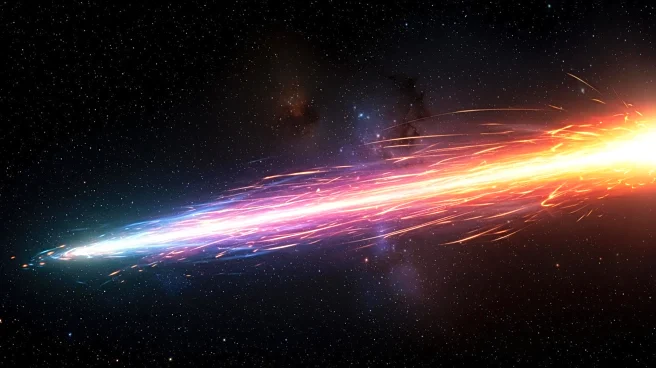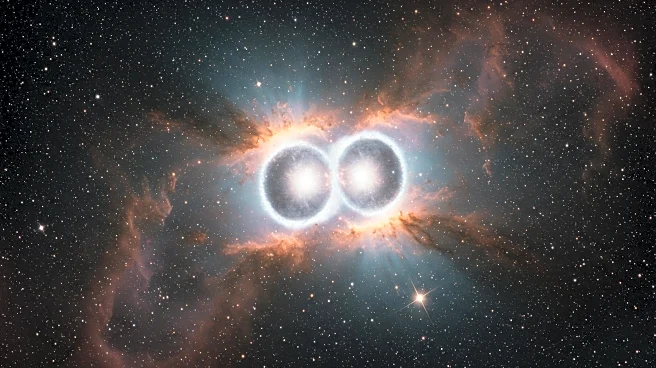What's Happening?
Astronomers have discovered a ring-shaped magnetic field within the blazar PKS 1424+240, which may explain its extreme gamma radiation and neutrino emissions. The blazar, located billions of light-years away, is the brightest known neutrino-emitting object, yet its radio jet appeared to move sluggishly. Using 15 years of observations from the Very Long Baseline Array, researchers revealed a toroidal magnetic field that accelerates particles to high energies, solving the mystery of the blazar's emissions. The alignment of the jet towards Earth amplifies its brightness, providing a rare opportunity to study its structure.
Why It's Important?
This discovery is significant for multimessenger astronomy, linking relativistic jets, high-energy neutrinos, and magnetic fields in cosmic accelerators. It confirms that active galactic nuclei with supermassive black holes are powerful accelerators of both electrons and protons. The findings enhance our understanding of particle acceleration in space, potentially influencing future research and technology in astrophysics. The success of the MOJAVE program demonstrates the value of long-term observational projects in uncovering cosmic phenomena.











